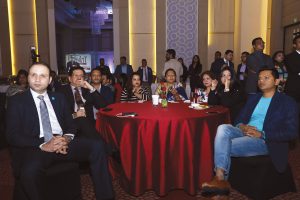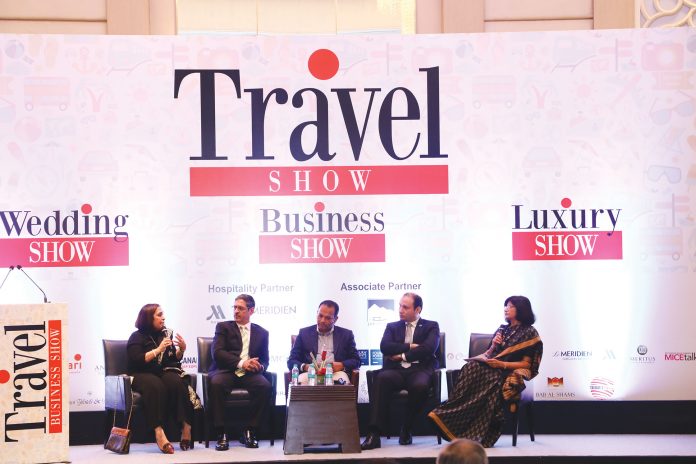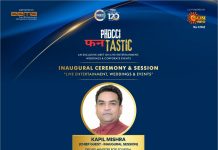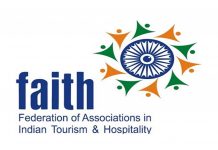Elaborating on different skills required for experiential MICE, different stakeholders of the MICE industry gave their perspective during the 2nd edition of the Travel Business Show. Here are some excerpts…
Kanchan Nath
The panel discussion was moderated
by Priti Khanna, Director, DDP Publications and the eminent panelists included Tekla Maira, Director Luxury Sales –India, AccorHotels; Homa Mistry, CEO, Trail Blazer Tours; Kiran Thomas, AVP, Administration and Global Travel, Sutherland Global Services and Ismail A Hamid Amer, Regional Director, Egyptian Tourism Counsellor.
Initiating the discussion, Khanna elucidated on the growth trends in the MICE segment. She said, “Globally, the MICE segment has overtaken the business trip segment and has a 54 per cent
market share. The FICCI-MRSS report released earlier this year states that for MICE it is essential to curate experiences than just tourist spots. The success of any event hinges on the attendee
experience. Attendees come in a variety and with varying expectations and motivations that affect how they experience an event. This makes MICE even more challenging as there are large
numbers involved.”
TAILORING MICE EVENT APTLY
The discussion throws light on how destinations are culling out experiences that are exclusively curated for the participants. Elaborating on the same, Mistry said, “Deciding a destination purely depends on the corporate’s budget. If the budget is
40,000 per person, you pretty well know its going to be Sri Lanka, Dubai or Thailand. If the budget is a lakh plus, then you are talking Europe. It’s the budget and it’s the date which takes us forward to see which country and where we are going to go.
Our role comes in when we get a brief from the client on what they want to achieve.”
The client and experience shall reap its benefit only when the company knows the exact requirements of their customers, adds Mistry. “If it is just a tour he is giving to dealers to go for
and enjoy well, you look at it differently. If there is a theme to it, for example, if there is a product launch, then everything changes depending on the theme. Theme takes you across to what the
exterior should be. What exactly the corporate wants? What is the final achievement? Is the corporate looking at increasing the sales or is it looking at a brand which is being launched?”
Elaborating on the growing importance of incentives, Maira stated, “MICE is really a big piece and the ‘I’ in the MICE is what is dominating the segment. When you are looking at a MICE movement there are a number of stakeholders. There is the intermediary (DMC or agent), the corporate end user, each one has something
where their success hinges on. It is important to understand how we can help them to succeed. That is why I always urge our travel partners, take us with you to your end user corporate, so that we can understand what do they actually want.” It remains important and pertinent to comprehend what the dealers/ sales people are trying to achieve. “We need to understand what is the corporate looking for today, if your taking a dealer incentive, what is it that’s going to wow them. Is it the meeting facility, is it the room, is it the food? Once we understand that we can bring success.” “We had a group staying with us in a hotel in Abu Dabi, they all had sea facing rooms, so on the last day when the event was ending, we wanted to do something special. Each of the corporates had a sea facing room, after the event on the last morning, when they looked outside, we had the logo of the company on the beach, that said ‘thank you so much for staying with us’. These are very small things and they make a big difference,” adds Maira.
COMPONENTS OF DESIGNING THE INCENTIVE PROGRAMME
A well designed rewards or incentive programme can have a quantifiable impact on the core objectives of the organisation be it generating more revenue, creating brand loyalty, employee
recognition or addressing HR issues. The discussion pertained to highlighting the parameters to decide on a venue. Thomas opined,
“From the corporate point of view, when you talk about an incentive, variety is what we aim to offer employees and one of them is travel. You can have a cash incentive or a gift incentive. There are a lot of options available for a corporate to decide, like the special offerings to be given to the employees. The second thing would be to what my Return on Investment shall be. So, if I am willing to spend a 1000 rupees on MICE, I will look at what I am going to reap out of it. What is going to make that employee motivated, for him to come back and sell more of my products? It is vital to make sure at what is that they are looking at. Like a common country used for MICE, that would not really motivate or give a special experience for MICE. So, it will be depending on what is the trend in the market currently and which new destinations are being explored. Then comes the experience
with a personal touch.”
EXPERIENCING MICE
The experience for a MICE participant/attendee begins from the time an event is announced and continues till closure, be it the communication, follow-up, destination accessibility, visas, safety,
hygiene factors, attitude of people in the host country, on ground delivery, post event closure. The discussion pointed to the elements that enhance the overall experience. Maira added, “I think its very important to be clear in the communication right from the beginning. What mars everything at the end is the payment process. But if you have not been clear about the payment process, it does lead to unpleasantness. Whether it’s the agency, hotel or corporate, we need to keep a transparency with
each other.”

According to Mistry, “We should not over promise and under deliver. As a DMC the most important thing is commitment, once you know
what your client wants, one should deliver it opitmally. If the client gets return on investment, we are a part of the journey and they come back to us. Most of us have few clients and we want to
hold onto them.” It is important to understand the client requirements and go through the checklist thoroughly. Adds Kiran, “We have to be transparent on the quality and the service that we are going to offer. I can think of 40 to 45 days window would be the right thing to plan a MICE trip from the corporates side.” A destination that has a DMC, which, is well controlled and supervised, is a crucial component so that the scope for error is reduced. Adds Amer, “In Egypt, all the DMCs are enrolled in the Egyptian tourism federation and are paying big insurance to secure the transactions. The second step is to have a concrete accurate contracting system with your partner in the destination. Whether it is a full package and empty package, all needs to be stipulated and
mentioned in the contract. Talking about big groups, he adds, “A DMC from Egypt can fast-track the immigration process as well as create an immigration counter at the airport. Indians are a very friendly community and an experience can be shared very easily. This is already there not only in the airport but also in all the sightseeing. For if you are doing ticketing for 100 to visit the temple or museum for instance, you need to have the experience to handle big groups. There are DMCs who can handle big groups, because big groups require special teams. So, you have to talk to the DMCs who work in that particular segment.” All the DMCs are enrolled in the website of Egypt, so we can shortlist some of the DMCs. We are a very open community, and everything can be checked though our office here as consultants. The other is word of mouth, I believe the Indians are a very friendly community and experience
can be shared very easily. The third thing is the reviews of clients and guests online. I think its also an open community. There are many ways that information can be ascertained.”
DOCUMENT IT RIGHT
There is a huge amount of documentation work that is required for MICE movements. The panelist elucidated on how the process of
documentation is dealt in a holistic manner. People nowadays are well travelled and are not first timers. Mistry adds, “The popular embassies take 15 working days. Documentation has become better, the outer limit is 15 working days. So, if your systems are in place and if you have been clear in saying what are your requirements, if your follow-up is there, then everything falls in
place. Today embassies are coming forward, a lot of financials are not required if a company signs a letter. Earlier, first timers used to have a problem.
Nowadays, there are huge numbers that are visiting the US, because the systems have become less cumbersome. Corporates expect such efficiency.” Talking about the choice of a destination by travel agents, Mistry said, “If it’s a large group, I will first see air connectivity, because there are two types of groups. One is where we get money and give experience. The other is the, ‘damaad
group’ which means you have to treat the guy like a son-in-law. That one is a difficult. One needs to see how Tier-2, Tier 3 are connected. We try our best to give the best possible solution among
what is available.”
FOOD FOR THOUGHT
Providing healthy and culturally relevant food and beverages is engaging but for an Indian group, the availability of a good and hot Indian food at the destination is a major ingredient in the overall experience, panelists share more. Talking about the dynamics of working out the food details for the Indian client, Mistry said, “I think availability of Indian food is far more
difficult than the 10-year US Visa. It can make or break a MICE movement. When we try and explain that to a FBO he does not understand. In India, if you talk about food, it pertains to regions as well. If I have a large group of 300 people, there
is bound to be inquiries for a Jain, Gujarati and Marathi cuisine.
It will be different from other colleagues coming from the southern part of India. Once you have catered to all four directions then one has to deal with the vegetarian and non-vegetarian part. Nowadays, vegetarians have gone to the next extent, of being vegan as well. For nonvegetarians, there is also an option of eggetarians, or who are particular of just consuming either
chicken or fish, ‘never pork and beef’ And the ones who mention that ‘we don’t make non-veg at home, but we eat outside everyday’. Once you think you have dealt with all that and that is when
the days are thrown into you. The specifications of a Tuesday, Thursday or Saturday because people do not consume non-vegetarian during those times. Finally, if we do manage to do all of
this, the demand of variety is there. Food is far
more difficult than the visa, but we manage.”












